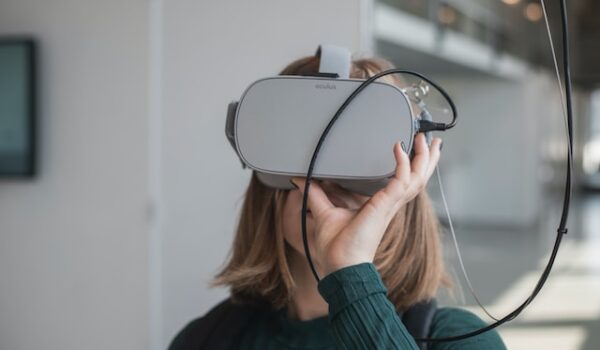In the ever-evolving landscape of e-commerce, a new wave of technology is reshaping the way we shop online. Virtual Reality (VR) and Augmented Reality (AR) have emerged as game-changers in online store development, creating immersive and engaging shopping experiences that bridge the gap between physical and digital retail. In this article, we will delve into the Virtual Shopping Revolution, uncovering how VR and AR applications are revolutionizing the online shopping experience.
Introduction: The Changing Face of E-Commerce
The digital era has transformed the way we shop, leading to the rise of e-commerce giants. However, the absence of physical interaction with products remains a challenge. Enter VR and AR, technologies that enable consumers to virtually touch, feel, and interact with products before making a purchase.
Understanding Virtual Reality (VR) and Augmented Reality (AR)
VR creates entirely immersive environments that transport users to virtual worlds, while AR overlays digital elements onto the real world. Both technologies have found their way into online stores, enriching the shopping journey.
Enhancing Product Visualization with VR and AR
Traditional online shopping lacks the tactile experience. VR and AR fill this gap by offering 3D product visualizations, allowing customers to examine products from every angle, thus making informed decisions.
Interactive Try-Before-You-Buy: Redefining Customer Confidence
One of the biggest challenges in online shopping is the inability to try products before purchasing. VR and AR enable virtual try-ons, empowering customers to visualize how products fit and look, boosting their confidence to buy.
Personalization and Customization: Tailoring the Virtual Shopping Experience
VR and AR also excel in personalization. They analyze user data and preferences to create tailored shopping experiences. Imagine a virtual store that showcases products based on your style and interests.
From Brick-and-Mortar to Click-and-Mortar: Virtual Stores and Showrooms
The line between physical and virtual stores is blurring. Retailers are developing virtual showrooms where customers can browse and interact with products in a simulated environment, marrying the convenience of online shopping with the tactile experience of physical stores.
Overcoming Challenges: Accessibility, Technical Hurdles, and User Adoption
While promising, VR and AR adoption comes with challenges such as accessibility for all users, technical complexities, and the need for users to adapt to new ways of shopping.
The Future is Here: VR and AR as the Cornerstones of E-Commerce
The growth of VR and AR in online shopping is unstoppable. They are poised to become the cornerstones of the e-commerce industry, transforming how we shop and revolutionizing the retail landscape.
Virtual Shopping Security: Ensuring Safe Transactions
With the increasing integration of VR and AR into e-commerce, ensuring secure transactions and safeguarding user data become paramount to prevent potential breaches.
The Environmental Impact: Sustainability in Virtual Shopping
Virtual shopping can contribute to sustainability by reducing the need for physical stores and decreasing carbon footprints associated with traditional retail practices.
VR and AR in the Fashion Industry: Redefining Dressing Rooms
The fashion industry benefits immensely from VR and AR. Virtual dressing rooms enable customers to try on clothes virtually, eliminating the hassle of fitting rooms.
Beyond Retail: VR and AR Applications in Real Estate
The applications of VR and AR extend beyond retail. In real estate, potential buyers can take virtual tours of properties, saving time and making property exploration more convenient.
The Social Aspect: Virtual Shopping with Friends
Shopping is often a social activity. VR and AR recreate this experience by allowing friends to shop together virtually, even if they are miles apart.
Ethical Considerations in Data Usage and Privacy
As with any technology, VR and AR raise ethical concerns about data privacy and usage. Striking a balance between personalization and privacy becomes crucial.
Conclusion: Embarking on a New Shopping Frontier
The integration of VR and AR into online store development marks a significant shift in the e-commerce landscape. Virtual shopping is no longer a concept of the future; it’s here, providing immersive, personalized, and engaging experiences that redefine the way we shop.
